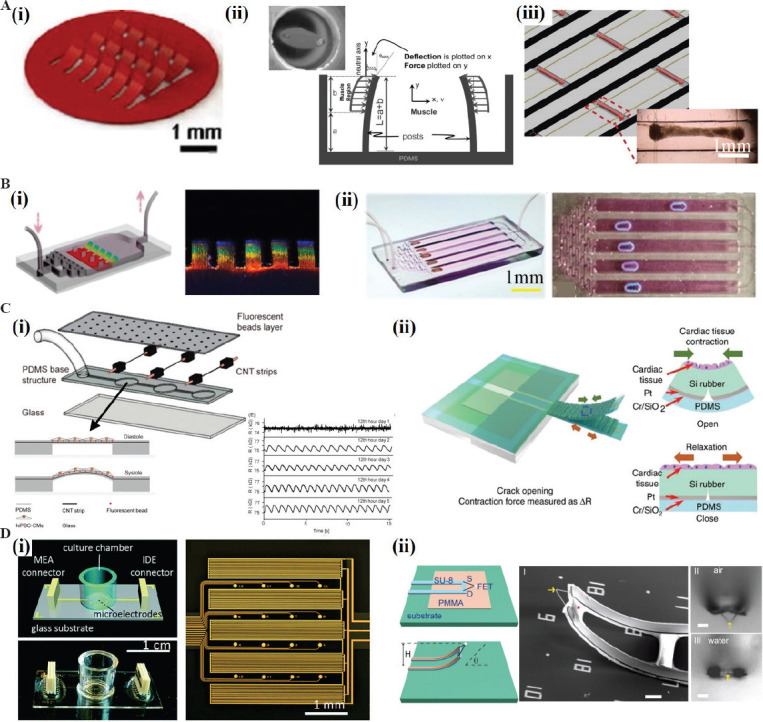Figure 3.

Microsensers in heart-on-a-chip. (A) Mechanical stress microsensors based on the visible deformation. The CMs can be cultured on different structures and result in the deformation. (i) MTFs (Reproduced from ref.[59] with permission from The Royal Society of Chemistry); (ii) micropillars (Republished with permission from Vandenburgh H, Shansky J, Benesch-Lee F, et al., Muscle Nerve, © 2008 WILEY-VCH Verlag GmbH and Co. KGaA, Weinheim). (iii) biowires (Republished with permission from Zhao Y, Wang EY, Davenport LH, et al., Adv Healthcare Mater, © 2019 WILEY-VCH Verlag GmbH and Co. KGaA, Weinheim). (B) Mechanical stress microsensors based on structure color. The microsensors can be designed to different structures. (i) MTFs (Republished with permission from Fu F, Shang L, Chen Z, et al., Science Robotics, 2018, 3(16): aar8580); (ii) microrobots. (Republished with permission from Sun L, Chen Z, Bian F, et al., 2020., Advanced Functional Materials, 2019, Weinheim) (C) Mechanical stress microsensors based on the electrical sensors. (i) Piezoresistive microsensors embedded inside the membrane (Adapted with permission from Wang L, Dou W, Malhi M, et al., 2018, Microdevice Platform for Continuous Measurement of Contractility, Beating Rate, and Beating Rhythm of Human-iPSCs-Cardiomyocytes inside a Controlled Incubator Environment. ACS Applied Materials and Interfaces, 10(25): 21173-83. Copyright (2018) American Chemical Society); (ii) crack-based microsensors (from ref.[74] licensed under Creative Commons Attribution 4.0 license) (D) Electrophysiology microsensors. (i) 2D MAE array for action potential and impedance readout (Reproduced from ref.[76] with permission from The Royal Society of Chemistry); (ii) 3D nanoelectrodes, scale bar = 5 mm (Tian B, Cohen-Karni T, Qing Q, et al., Science, 2010,329(5993): 830-4).
